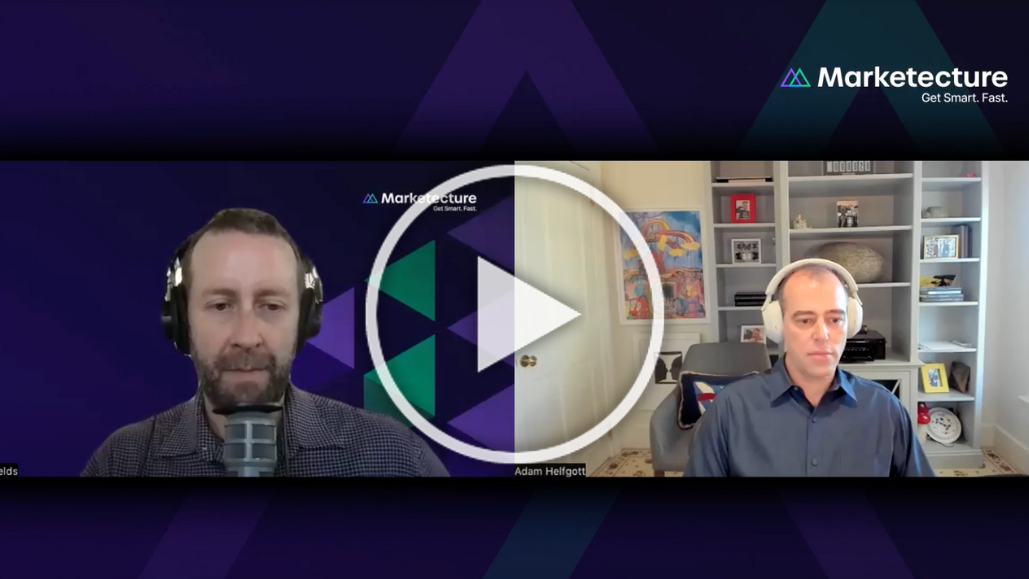
The following article highlights an interview between Adam Helfgott, Madhive’s Chief Executive Officer, and Mike Shields, co-founder of Marketecture Media and host of the ‘Next in Marketing’ podcast. Register to watch more of the discussion and learn how advertisers are employing DSPs to power local CTV campaigns.
As connected TV grows and the landscape becomes increasingly competitive, traditional linear advertisers and broadcasters are flocking to demand-side platforms to target highly localized audiences more effectively.
CTV is expanding but not necessarily as quickly when it comes to local markets. Yet local sellers are increasingly finding CTV to be a potential growth channel. For example, Madhive, a demand-side platform geared toward local television, found a high demand for CTV campaign activation with local advertisers in the U.S.
As linear markets dwindled with so many moving to CTV, Madhive chose to become a CTV solution for local sellers.
“It seemed inevitable that all television would eventually be delivered over internet protocol,” said Helfgott. “We tuned into that hype early to be a reach extension DSP for local [CTV] sellers because local, linear television isn’t a great OTT channel at scale.”
To further unpack that dynamic, Madhive’s CEO, Adam Helfgott, recently spoke with Mike Shields, co-founder of Marketecture Media and host of the ‘Next in Marketing’ podcast, about how advertisers are helping local advertisers activate CTV campaigns across an evolving streaming landscape.
Advertisers are turning to DSPs to improve local frameworks for CTV campaigns
With so many new evolutions of CTV taking place, an increasing number of advertisers and broadcasters are searching for ways to capitalize on the technologies to reach local audiences.
In addition to offering local CTV inventory for broadcasters, DSPs like Madhive are helping advertisers address duplicated reach to mitigate audience overlap within their local campaigns. They’re also offering analytics solutions and providing demographic insights.
From QR codes and other technology integrations, Madhive is improving frameworks for local campaigns. They’re developing solutions to make it easier for CTV advertisers to move spend to different local markets.
“Our modern tech stack lets us do what other DSPs can’t do,” he said. “Our customers are doing the selling. And while one of the broadcast groups may lose a customer, it’s likely going to another one of our customers.”
“We’re trying to iterate on the current idea of what a DSP can do, normalizing the high fidelity,” said Helfgott.
Local CTV campaigns require automated measurement and activation
Despite new local-focused DSPs hitting the market, there remain plenty of measurement difficulties in the CTV space, especially with cross-platform viewing. To address this, Madhive’s team is prioritizing the development of a full-stack tech offering for local broadcasters and advertisers. This helps advertisers draw insights from audiences about which they previously knew little.
“We try to bring as much inventory in as possible so we can provide clients with that information,” Helfgott said. “Television is interesting because you don’t know who’s watching CTV and what the habits are, so we’re reliant on the new players in the market to measure.”
Still, smaller buyers will likely have less capacity to measure and run CTV campaigns effectively even with a DSP, especially when local advertisers are attempting to target highly specific demographic groups. In response, companies’ DSP providers are prioritizing automation capabilities, enabling advertisers to reach audiences without compromising campaign creative.
“Our philosophy is, ‘Let the robot do it,’” Helfgott said. “We have tools with a lot of automation for pacing campaigns and audiences. We also have selling teams to manage ad ops for customers.”
Local CTV’s future promises full-stack technologies and a move away from walled gardens
As CTV grows, more and more DSP providers are developing solutions that can handle the increase of local broadcasters, brands and advertisers in the space.
In Madhive’s case, targeting full-funnel marketers looking to increase CTV spending brought the most success. Whether they’re new to the space or have been in it for years, the DSP provider is helping these local advertisers and broadcasters bridge the gap between linear and streaming.
Still, with so many of the most prominent players in the CTV space — such as the walled gardens of Google and Amazon — the question arises: will there be a place for scalable hyper-local CTV solutions?
According to Helfgott, there’s a growing space for local CTV platforms. And while not all stakeholders in the digital advertising space believe these networks are suitable for all local advertisers, a growing number are specifically investing in DSP solutions designed for local CTV campaign activation.
“From a mission point of view, we believe local television and media are important to communities, so we like to do our work in supporting them,” he said. “The [local] media owners in television aren’t handing their inventory over to [larger providers].”
To learn more about local CTV campaign activation, listen to more of the conversation between Marketecture and Adam Helfgott here.
https://digiday.com/?p=492777

0 Comments :
Post a Comment